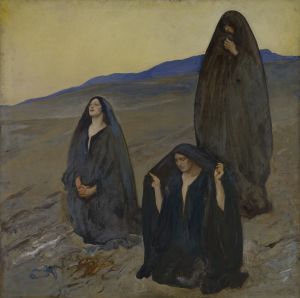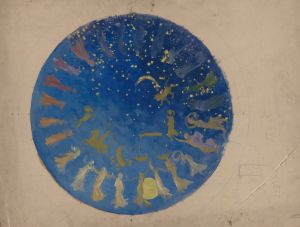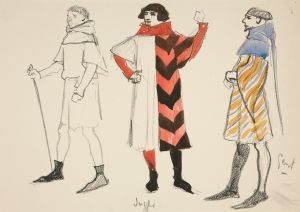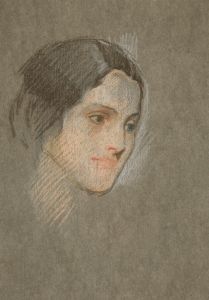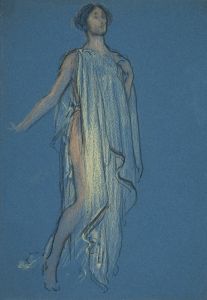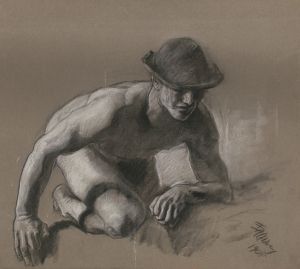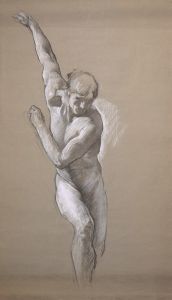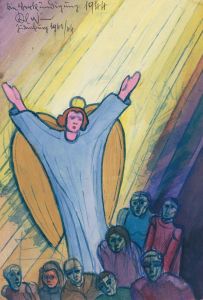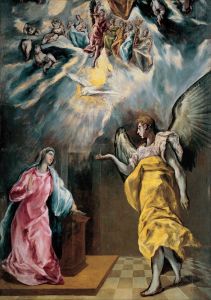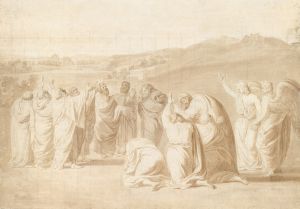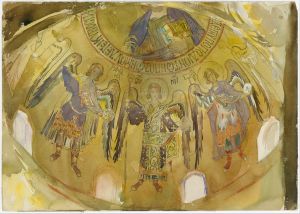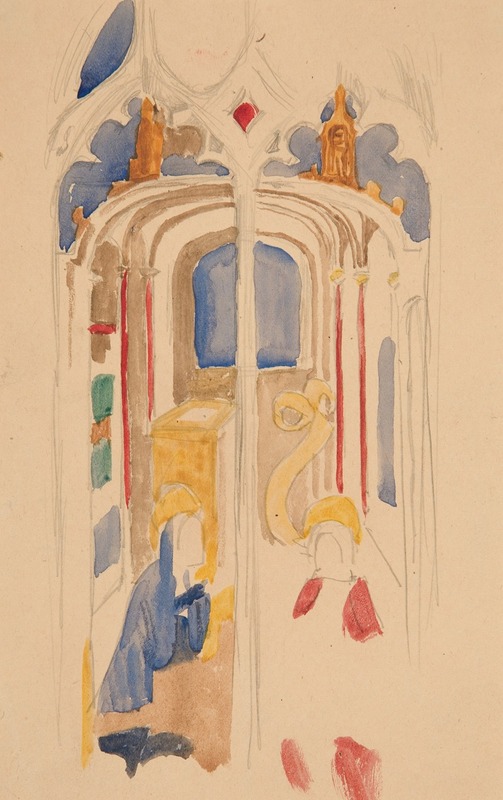
Study of the Annunciation
A hand-painted replica of Edwin Austin Abbey’s masterpiece Study of the Annunciation, meticulously crafted by professional artists to capture the true essence of the original. Each piece is created with museum-quality canvas and rare mineral pigments, carefully painted by experienced artists with delicate brushstrokes and rich, layered colors to perfectly recreate the texture of the original artwork. Unlike machine-printed reproductions, this hand-painted version brings the painting to life, infused with the artist’s emotions and skill in every stroke. Whether for personal collection or home decoration, it instantly elevates the artistic atmosphere of any space.
Edwin Austin Abbey's "Study of the Annunciation" is a notable work by the American artist, who was renowned for his illustrations and paintings during the late 19th and early 20th centuries. Abbey was born in 1852 in Philadelphia, Pennsylvania, and he gained prominence for his illustrations in magazines and books, particularly those of literary works by authors such as Charles Dickens and William Shakespeare. His transition from illustration to painting marked a significant evolution in his artistic career.
"Study of the Annunciation" reflects Abbey's interest in historical and religious themes, which he often explored in his works. The Annunciation is a biblical event that has been a popular subject in Christian art, depicting the moment when the Angel Gabriel announces to the Virgin Mary that she will conceive and become the mother of Jesus Christ. This theme has been interpreted by numerous artists throughout history, each bringing their own style and perspective to the scene.
Abbey's approach to the Annunciation is characterized by his attention to detail and his ability to convey a narrative through visual elements. Although specific details about this particular study are limited, it is likely that Abbey employed his characteristic style, which often included rich color palettes, intricate compositions, and a focus on the emotional expressions of his subjects. His works are known for their historical accuracy and the depth of research he invested in understanding the context of his subjects.
Abbey spent a significant portion of his career in England, where he was influenced by the Pre-Raphaelite Brotherhood and other contemporary artists. This influence is evident in his meticulous approach to painting and his interest in medieval and Renaissance themes. His time in England also allowed him to work on large-scale projects, such as the murals for the Boston Public Library, which further established his reputation as a painter of historical and literary subjects.
"Study of the Annunciation" would have been part of Abbey's broader exploration of religious themes, which he approached with the same dedication to historical context and narrative depth as his other works. While specific exhibitions or collections featuring this study are not well-documented, Abbey's works have been displayed in various prestigious institutions, reflecting his status as a respected artist of his time.
Abbey's contribution to art extends beyond his paintings; his illustrations played a significant role in shaping the visual culture of his era. His ability to bridge the gap between illustration and fine art painting is a testament to his versatility and skill as an artist. Abbey passed away in 1911, leaving behind a legacy of works that continue to be studied and appreciated for their artistic and historical significance.
In summary, Edwin Austin Abbey's "Study of the Annunciation" is an example of his engagement with religious themes, characterized by his detailed and narrative-driven approach. While specific details about this study are scarce, it fits within the broader context of Abbey's work, which is celebrated for its historical accuracy and artistic merit.





